Using the data compiled from the XT45 thermal testing I have compiled the following tables in an attempt to show another way how the XT45 performance varies against itself at the flow rates and fan speeds tested. First let’s take the raw data:
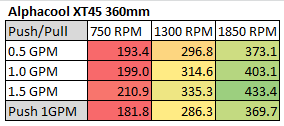 Now we can use this data to show percentage gains relative to a reference point. It’s an interesting way to show gains/losses while changing a variable. This first table shows performance gain or loss relative to 1.0GPM flow rate:
Now we can use this data to show percentage gains relative to a reference point. It’s an interesting way to show gains/losses while changing a variable. This first table shows performance gain or loss relative to 1.0GPM flow rate:
This shows that increasing flow to 1.5GPM has little gain while lowering flow to 0.5GPM does affect performance more.
We can also focus on 1300RPM as our reference and see how much gain or loss in performance we get by changing fan speed:
As expected the change is dramatic. Lastly we can combine both and choose 1300 RPM and 1.0 GPM as our reference point to show both effects concurrently:
So from the data above we can get a very good idea of how the XT45 radiator performs relative to itself. But there is a large selection of 360mm radiator models to choose from, released from numerous manufacturers. So, we need to start comparing performance between them. To see how the radiator performed against the other radiators in this group I have included the averaged flow rate comparison charts from the Round Up. We know that the flow rate has little impact on thermal performance so averaging of the 3 flow rate results gives us a good look at head to head performance for the push/pull results to give even less error. However let’s start with the “Push” results first:
At 750RPM the XT45 starts off in 10th place just 6% behind the lead.
At 1300RPM the XT45 drops to 13th place, now 10% behind the lead. Dropping behind this early on doesn’t bode well for the rest of the results.
At 1850RPM the XT45 moves into the lower half of the results at 16th place and it is now 14% behind the leading XE radiator. It’s doubtful that Push/Pull will make it perform better, but let’s take a look:
The XT45 starts off in 15th place at 750 RPM.
By 1300RPM it drops a spot to 16th and is now 13% behind the leading radiator.
At 1850RPM nothing has improved. 16th place and 18% behind.
This push and push/pull data can be combined to more easily see the “total” competition. The plots are busy, so color coordination is used to show results more clearly:
At 750RPM then the XT45 really is solidly average.
At 1300RPM the XT45 in Push while still pretty average can beat some worse performing radiators in Push/Pull.
At 1850RPM the XT45 in Push/Pull starts falling behind the leading Push Radiators.
From all of these results we can create a “master performance factor”. The radiator with the best cooling ability (W/10ΔT) at each gpm/rpm combo was awarded a score of 100, and each other radiators W/10ΔT result was scored as percentage of the top performer:
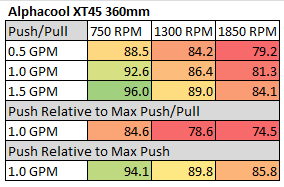
Then all these percentage scores were averaged giving us the Averaged Performance Factor of each radiator. This way of looking at the comparison takes away any advantages that a radiator may have at higher or lower fan speeds and looks at an overall average. While this appears fair it does tend to favor those radiators that are all rounders and those radiators which do very well at high RPM. Most users should be more focused on their specific use case. Check in the Round Up for performance comparisons at every gpm/rpm combo for even more details and cross comparison results. These are first seperated by setup type:
Both plots show that the XT45 is consistently average. However most of the radiators that beat it were significantly thicker. While the table form of the results makes the radiator seem like it’s tuned for lower RPM, I would suggest that it’s more that the competition pulls away at higher rpm.
Next up – Summary!








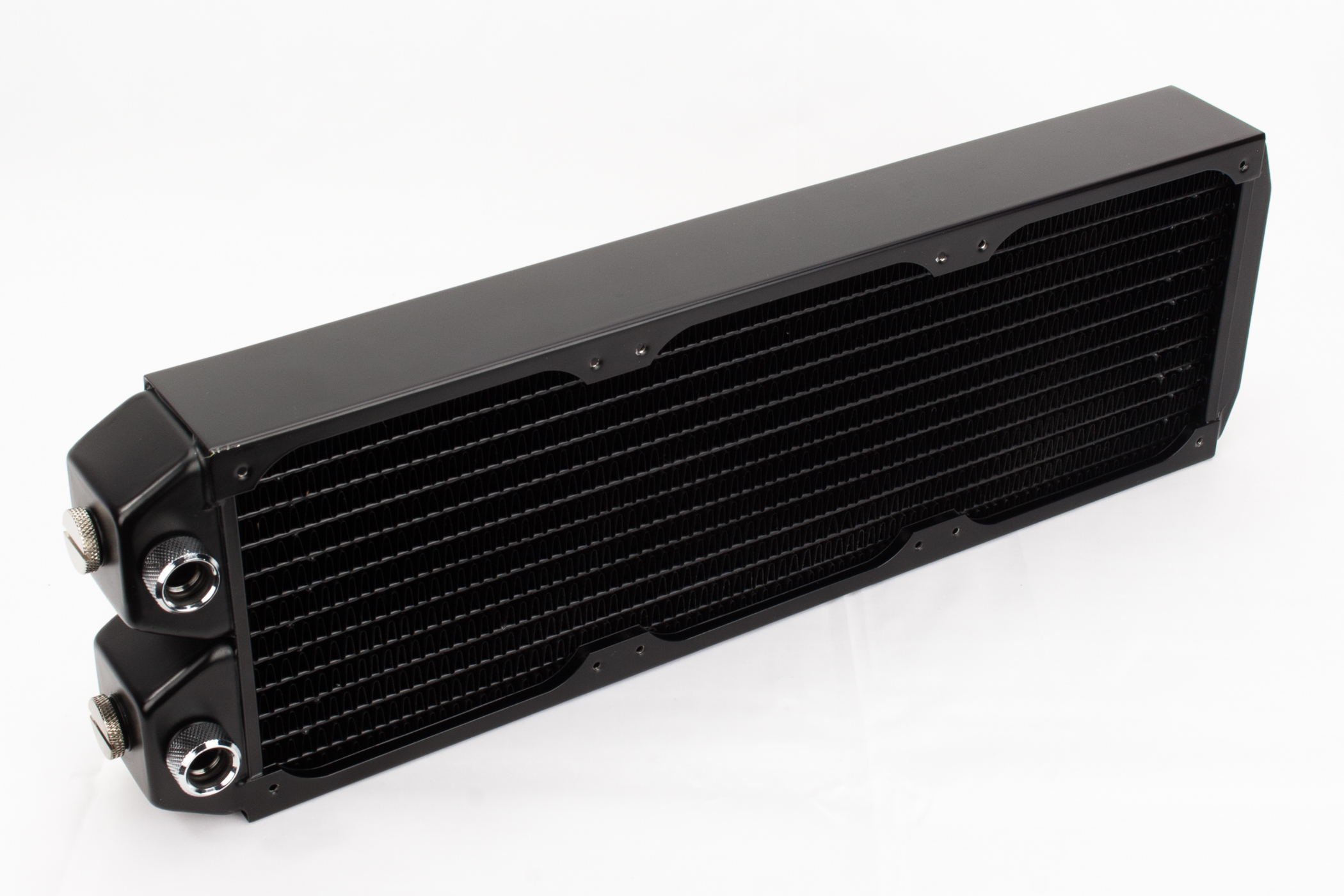
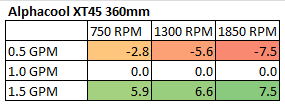
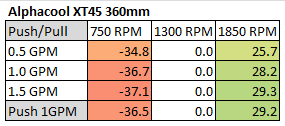
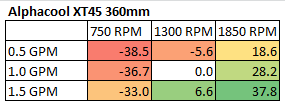
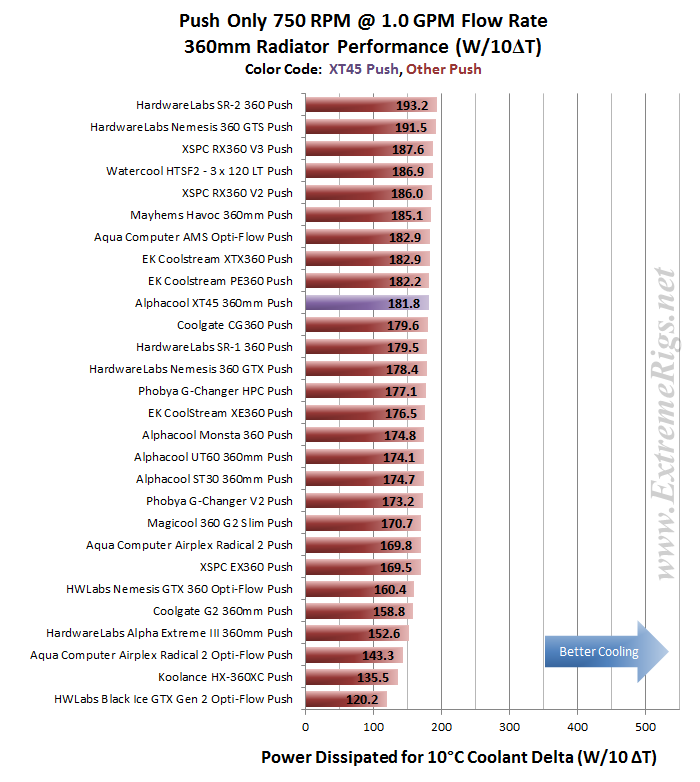
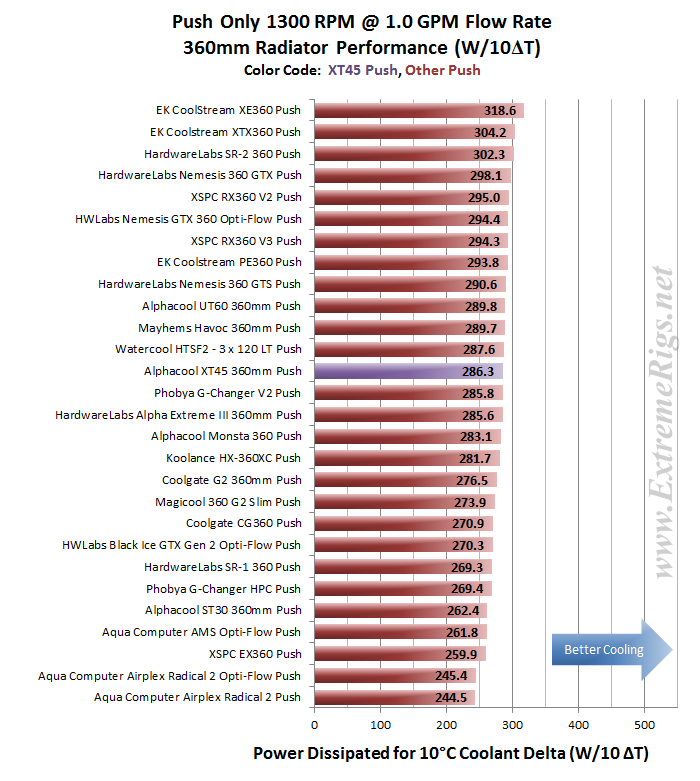
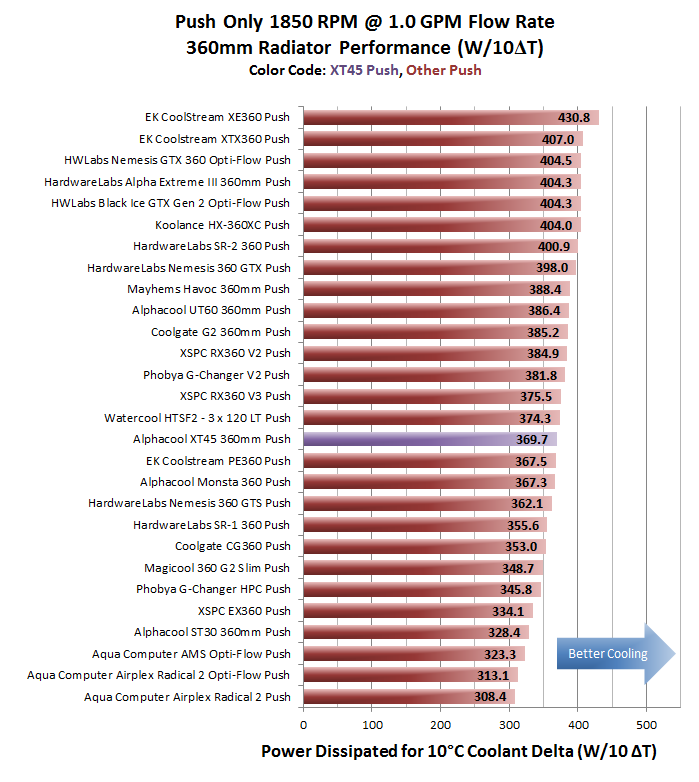
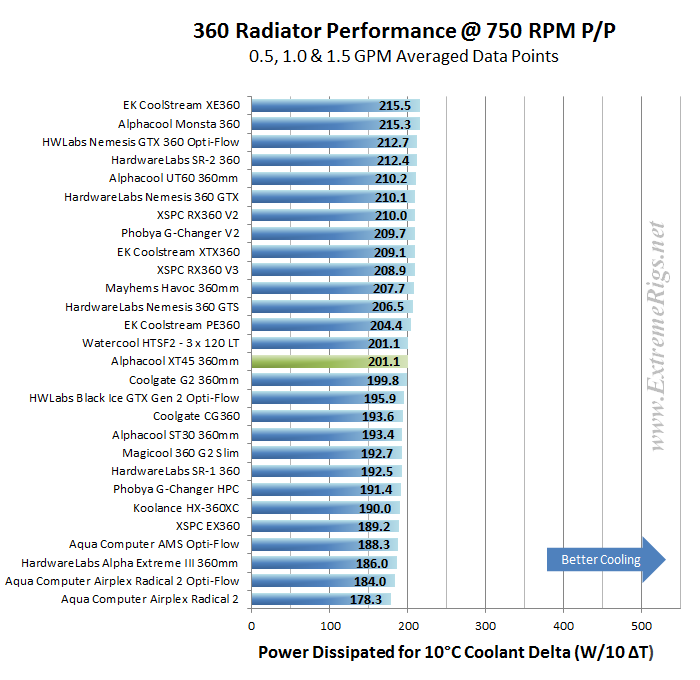
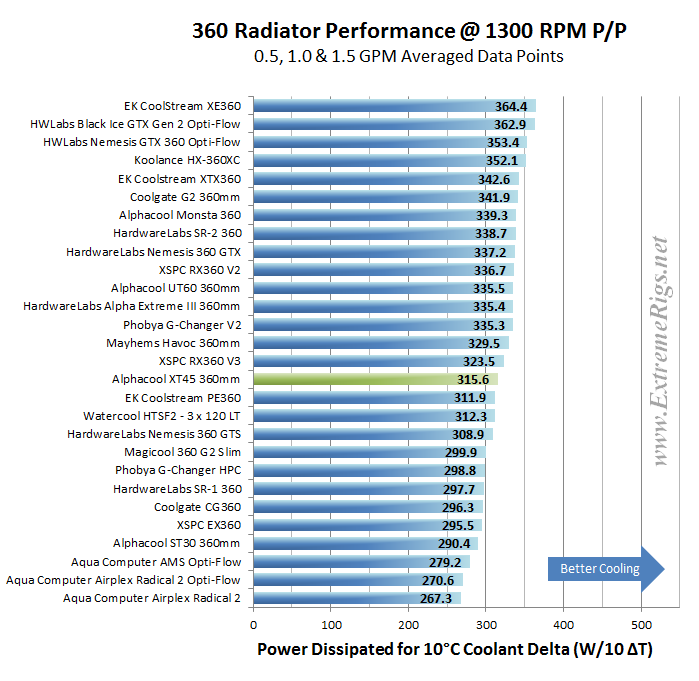
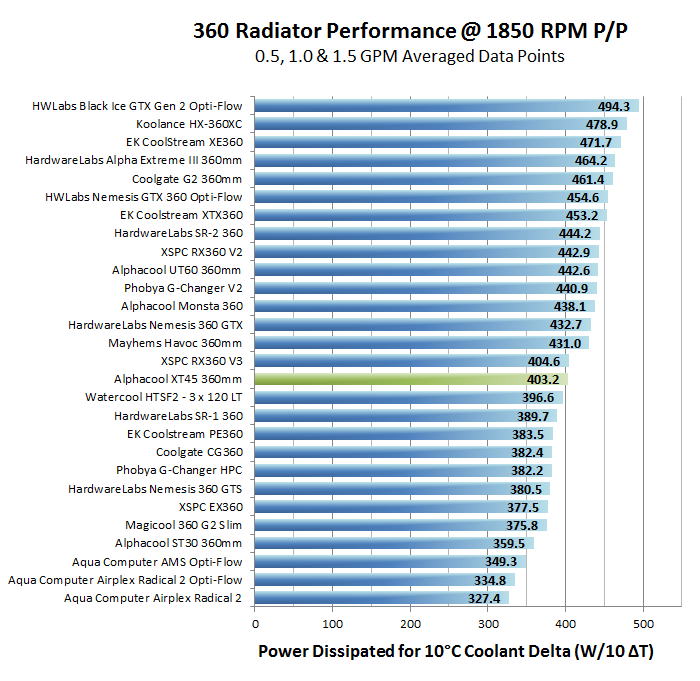
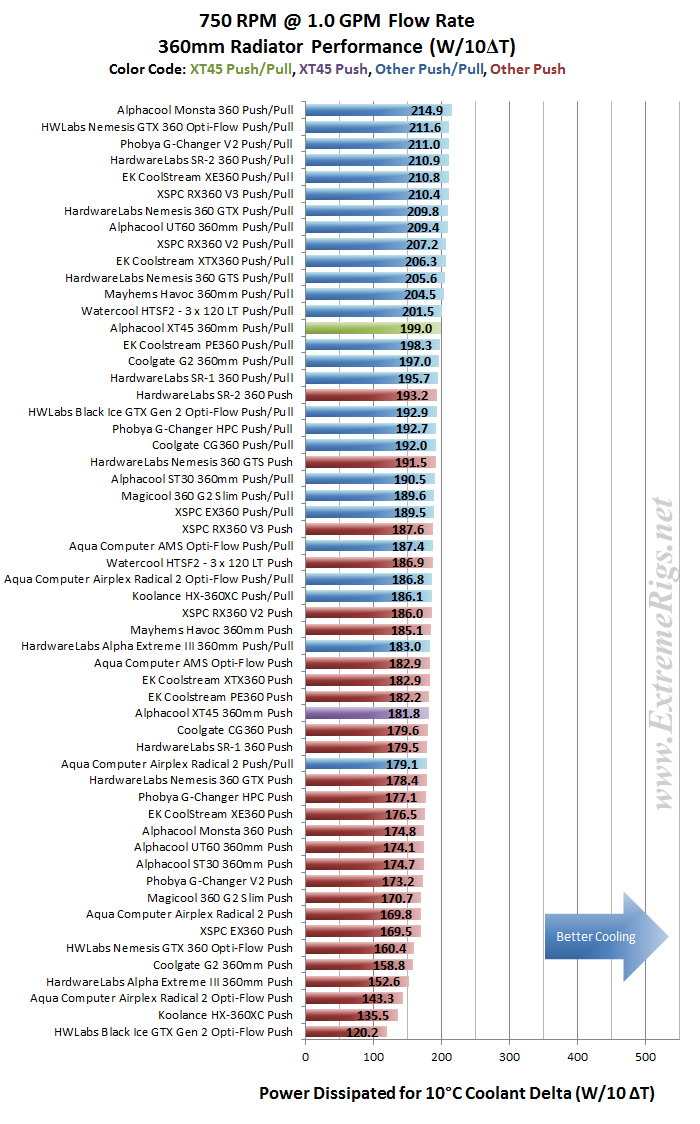
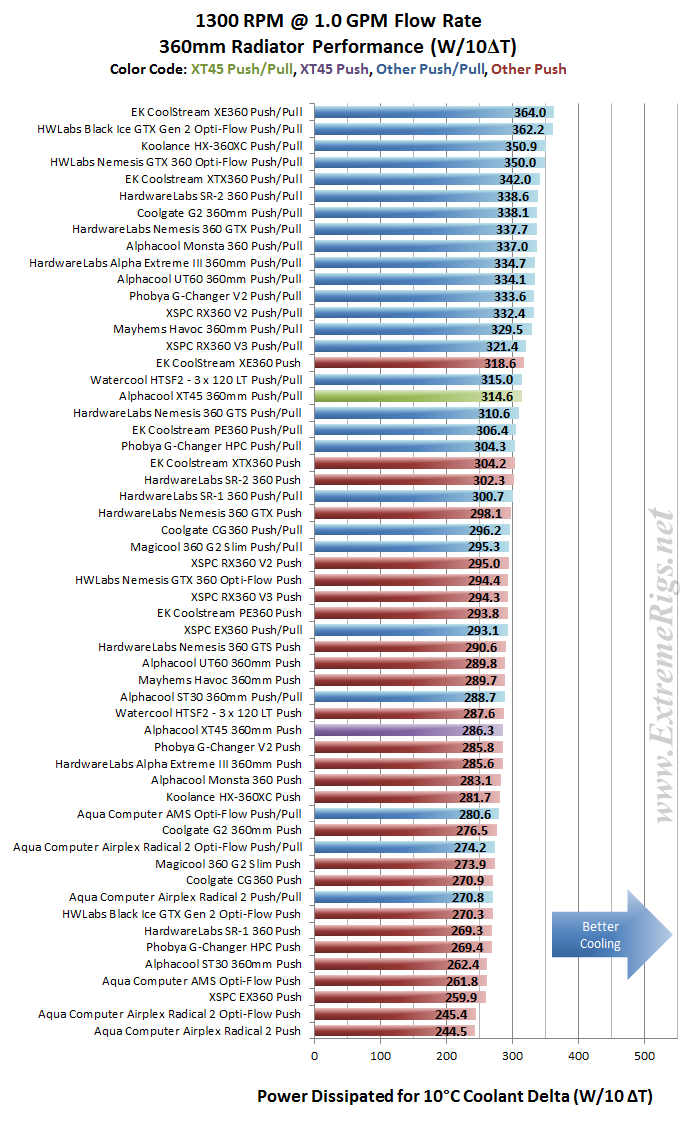
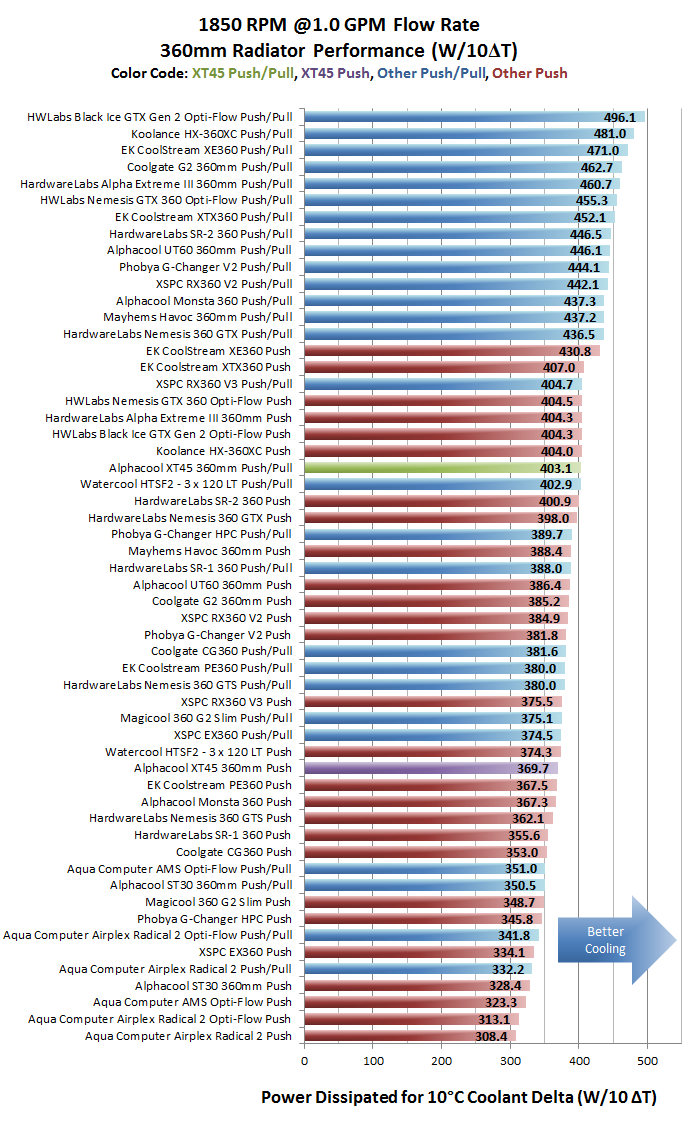
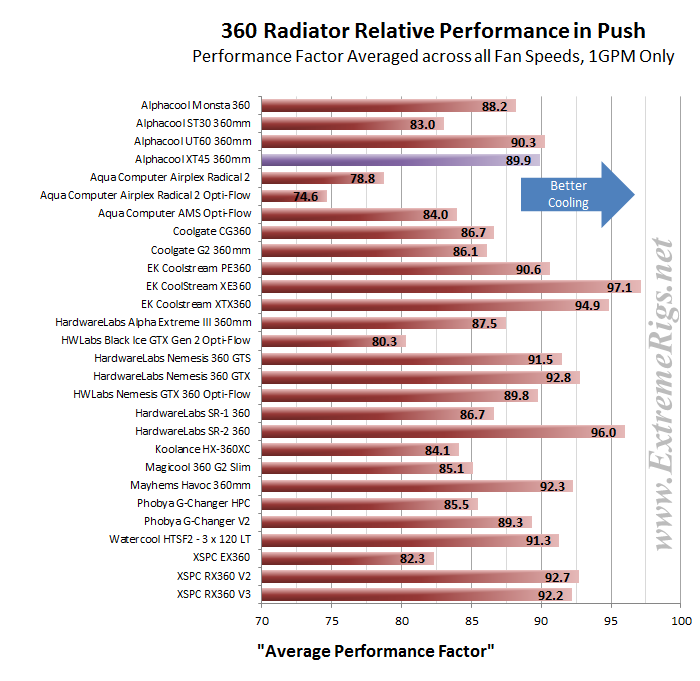
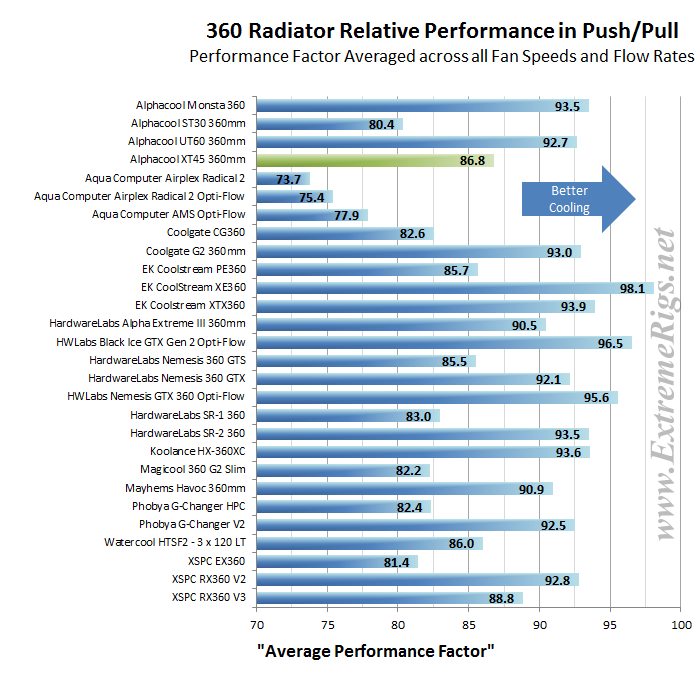




[…] UT60 360 Radiator Alphacool XT45 360 Radiator Coolgate G2 360 Radiator EK PE 360 Radiator Hardware Labs Alpha Extreme III 360 Radiator Hardware […]
Comments are closed.